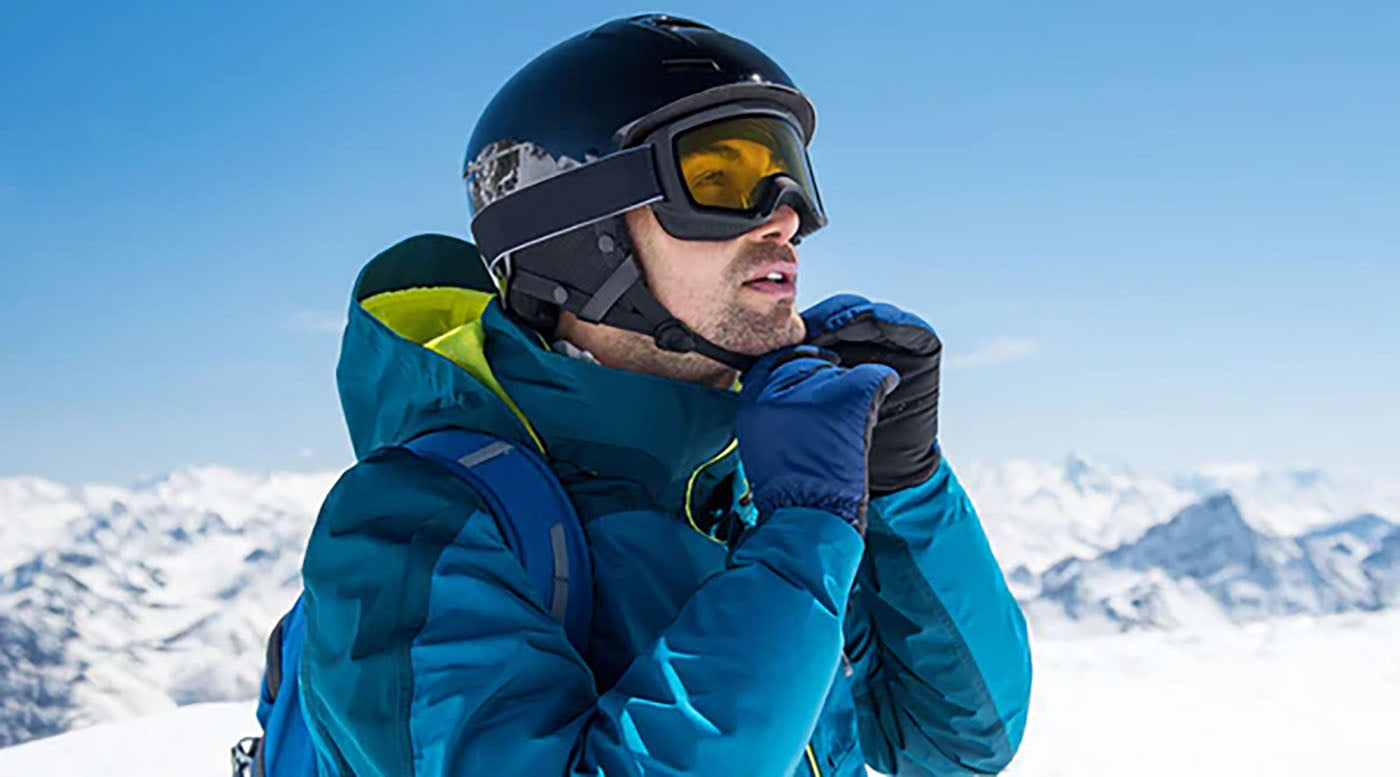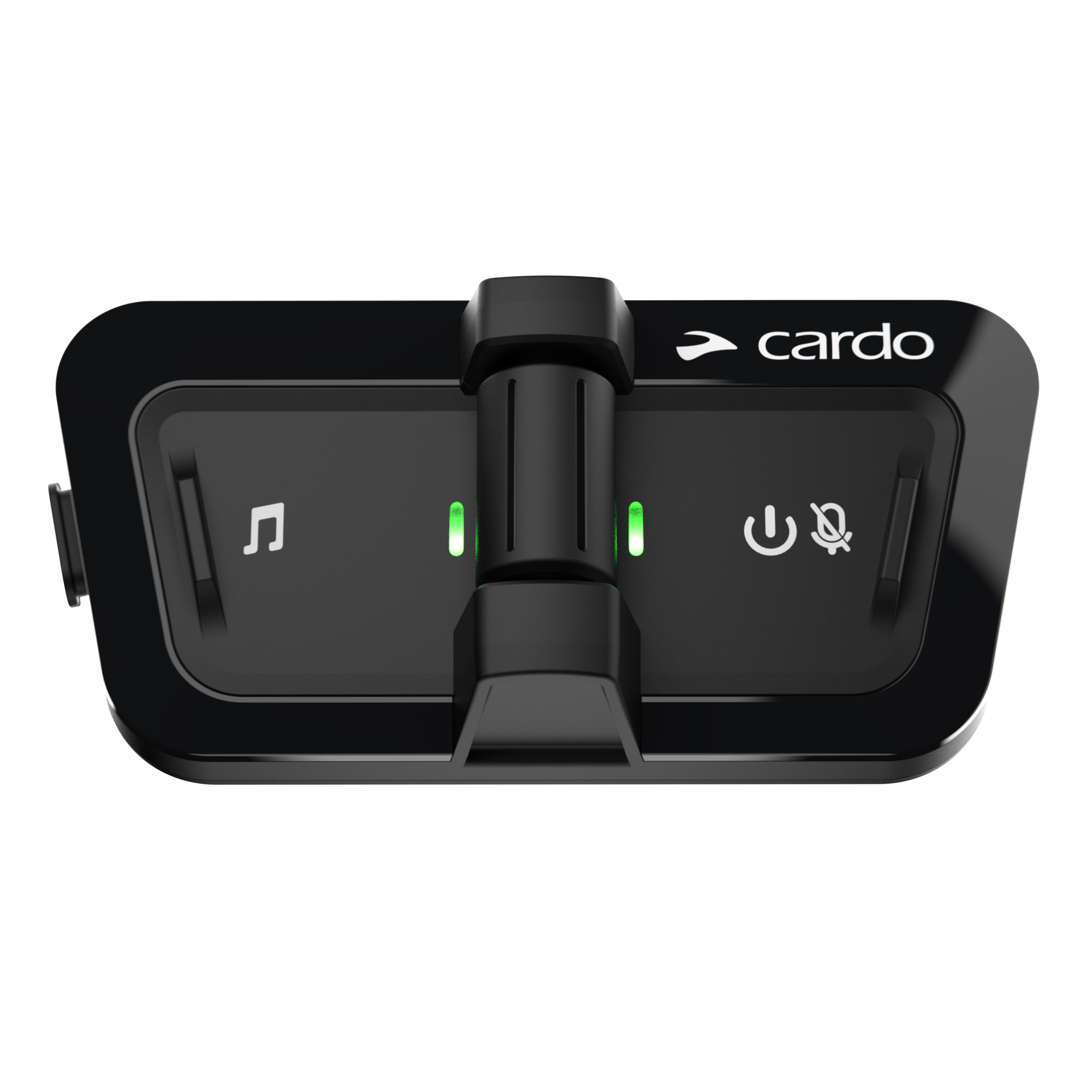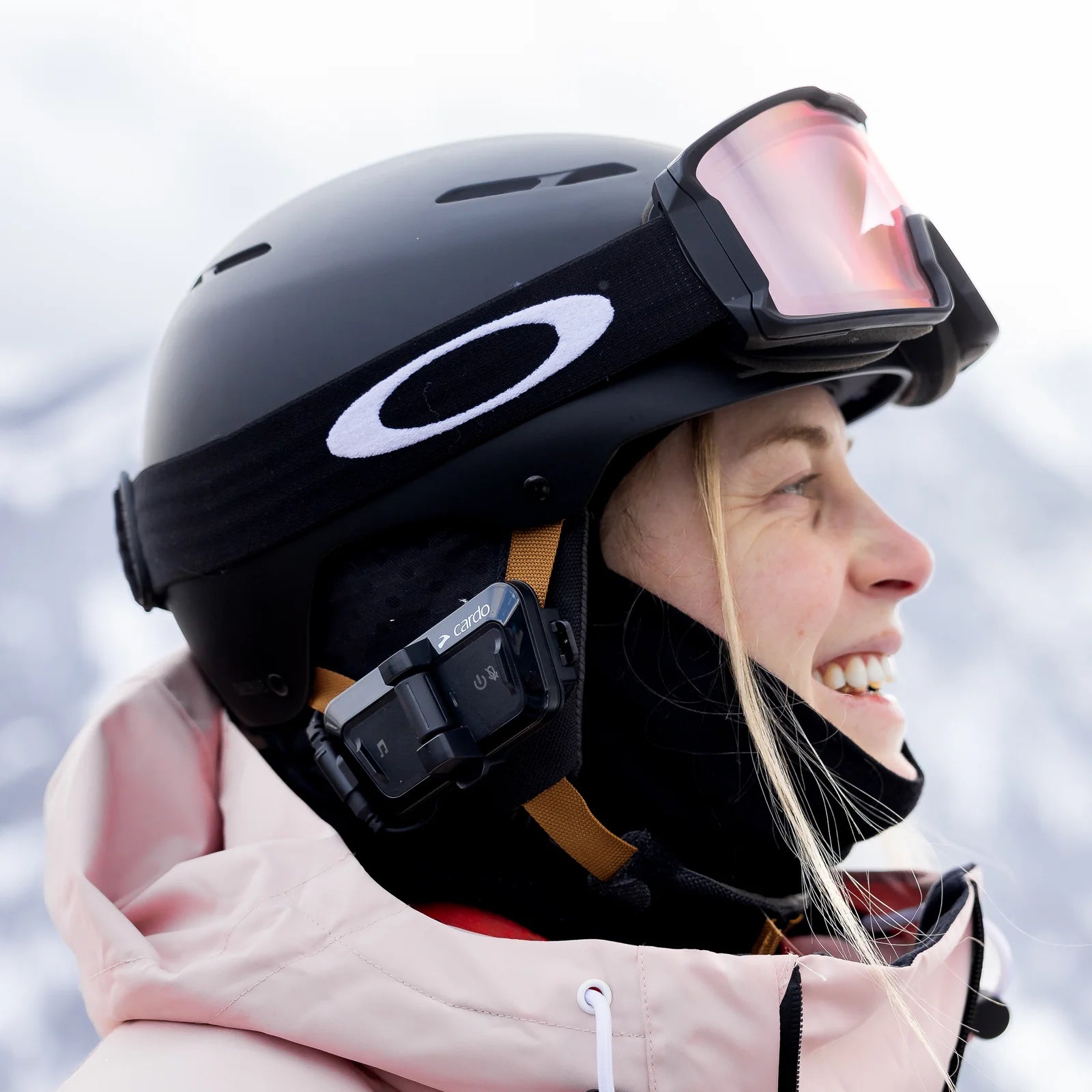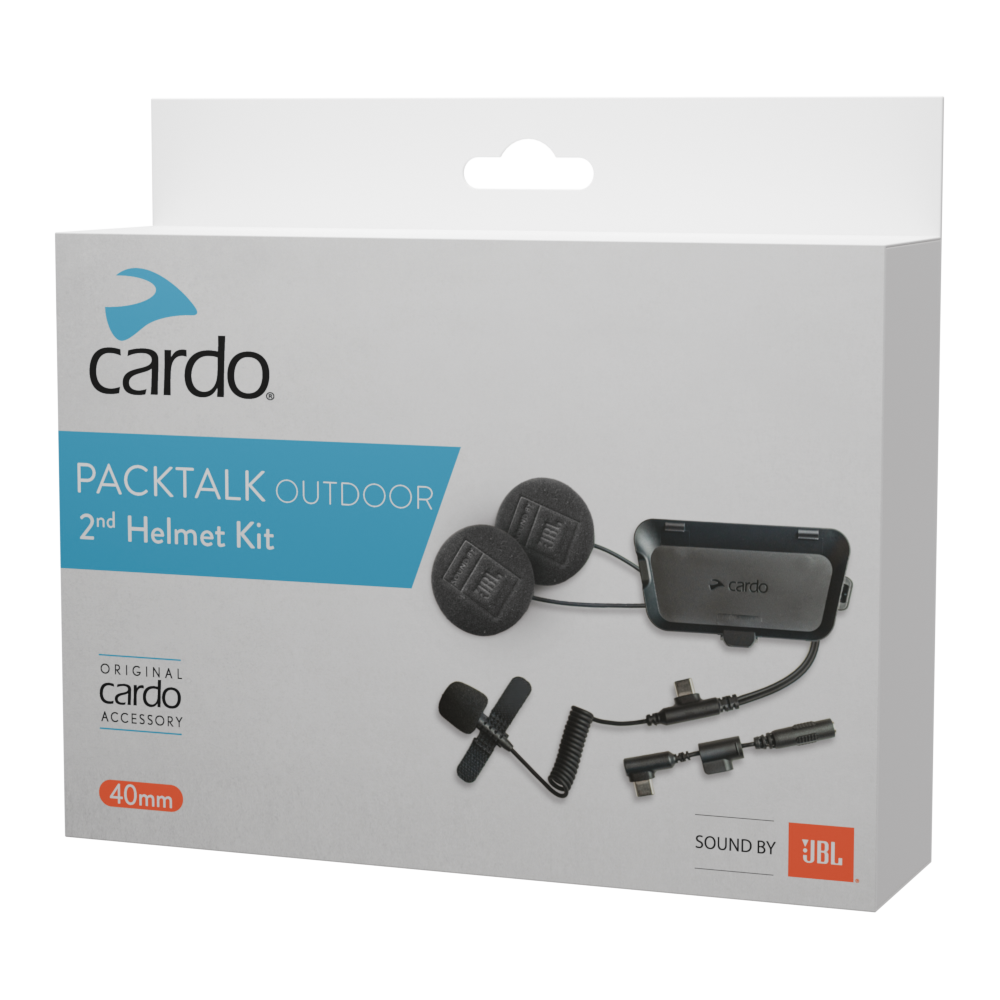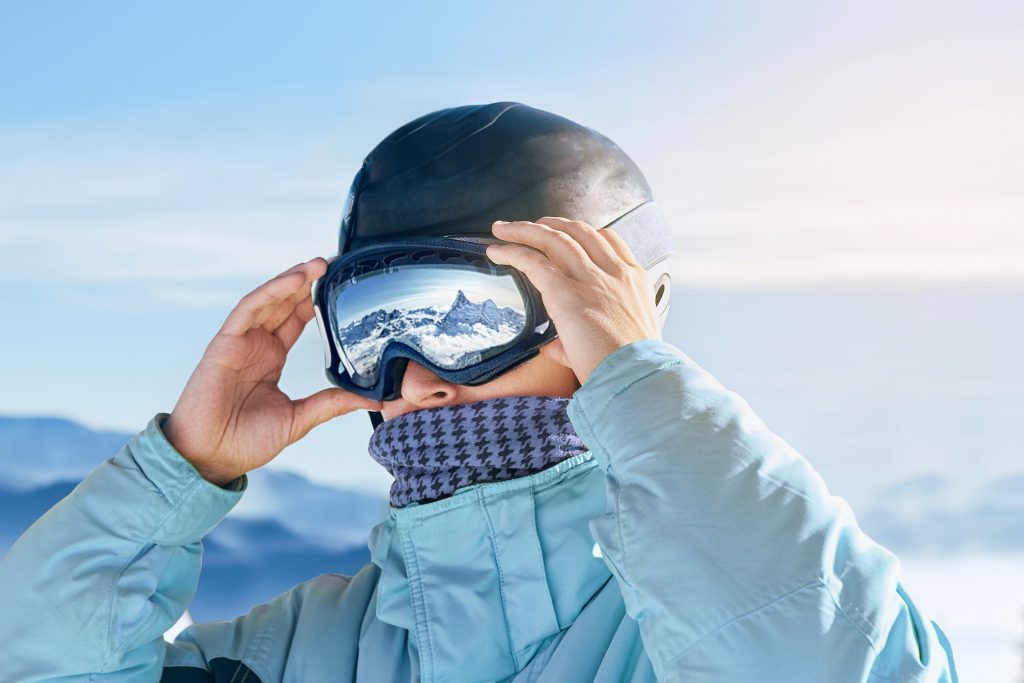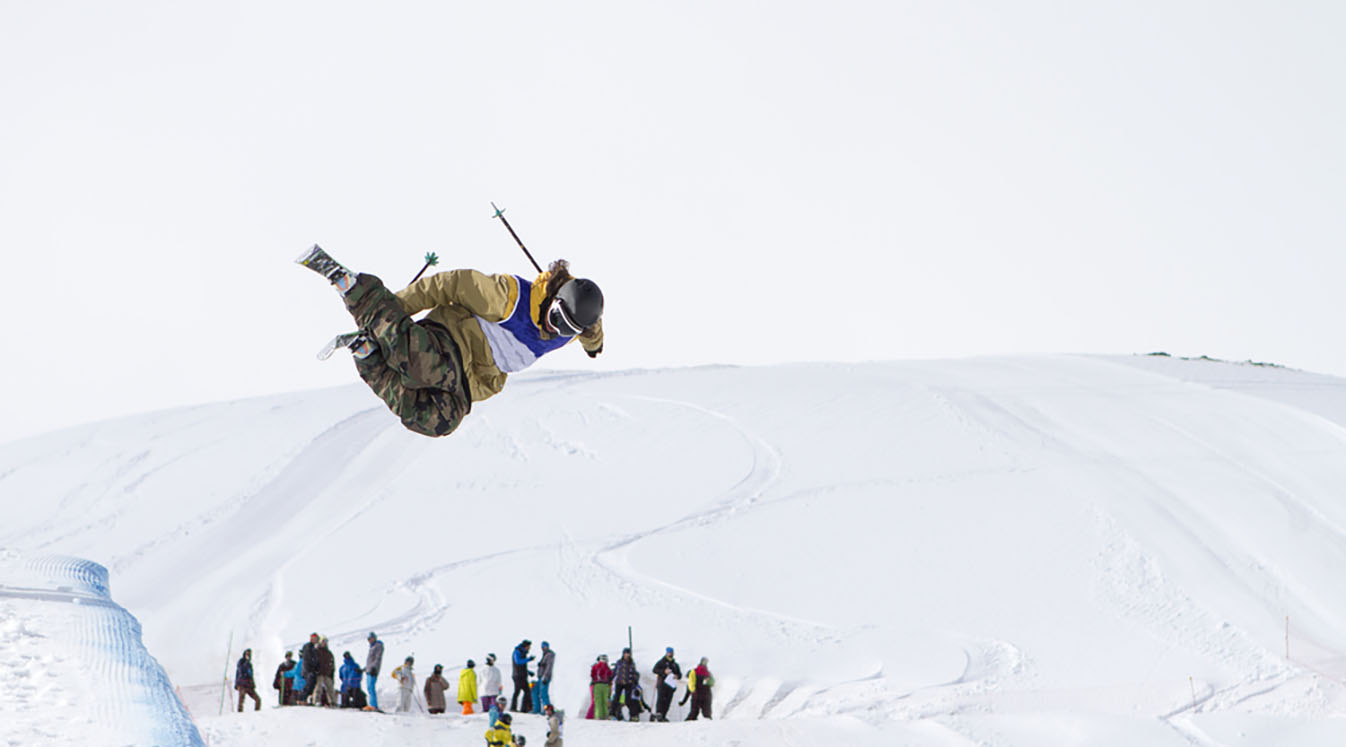Skiing is an exhilarating way to enjoy the great outdoors, but with that thrill comes an element of risk-taking. Whether you’re navigating the steep slopes of Whistler in Canada, weaving through backcountry trails of Colorado or tackling terrain parks in Europe, wearing a helmet can make a big difference in your safety and comfort on the mountain. It’s not just about protecting your head — helmets now offer advanced features like ski helmet communication systems, making it easier to stay connected with your group and focus on the fun.
Helmet use isn’t one-size-fits-all. Different types of skiing come with varying risks and requirements. While downhill skiers often prioritize helmets for speed and impact protection, cross-country skiers might appreciate the extra warmth and security a helmet provides in remote areas. Understanding when and why to wear a helmet is key to enjoying your time on the slopes while staying as safe as possible. Let’s explore the top benefits of wearing a ski helmet and some tips to help you get the most out of your gear.
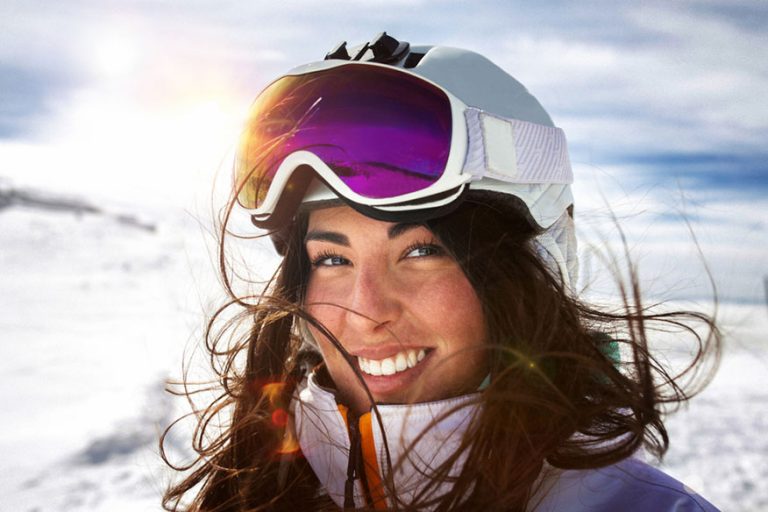
Source: Marko Ristic Leo/Shutterstock.com
Benefits of Wearing a Helmet While Skiing
1. Peace of Mind
Skiing is one of the most thrilling winter sports, but it’s not without its risks. Whether you're cruising down a beginner slope or attempting advanced terrain, wearing a helmet may help reduce the risk of head injuries. From unexpected falls to collisions with other skiers, the unpredictable nature of the slopes makes helmet usage a smart choice for everyone — from seasoned pros to those just starting out.
Different types of skiing come with their own set of challenges. In downhill skiing, high speeds can amplify the danger of obstacles like rocks or icy patches, while backcountry skiers face remote conditions where help might be far away. Even students in ski school can benefit from a helmet, as it protects their heads while they learn proper techniques. No matter your skill level, taking precautions ensures you can focus on having fun instead of worrying about your safety.
Why Helmets Provide Peace of Mind:
- Protection from Falls: Helmets are designed to reduce the severity of head injuries, especially during sudden impacts or unexpected spills on icy terrain.
- Prepared for Unpredictable Terrain: Whether you're navigating moguls or gliding through trees, a helmet adds a layer of defense against hidden dangers beneath the snow.
- Safety in Remote Areas: For backcountry and off-piste types of skiing, helmets provide security when emergency response times are longer.
- Confidence for Beginners: Students in ski school or new skiers can focus on learning and improving without worrying about minor bumps or falls.
2. Helmet Communication
Skiing is as much about connecting with nature as it is about connecting with your group. For first-time skiers, keeping in touch with companions at a busy ski resort or on the slopes can be challenging, especially when separated by distance or bad weather. Modern helmets now come equipped with ski helmet headphones and the flexibility to add these communication devices that take your skiing experience to the next level. These systems make it easier to coordinate with friends, stay informed and even enjoy music without fumbling with a phone or separate device.
Whether you're waiting in the lift line or gliding through fresh powder, communication tools keep you in sync with your group. They are perfect for navigating complex trails or staying safe during your favorite snow sports. Helmets are no longer just about protection — they’re essential for enhancing convenience and fun on the slopes.
Benefits of Helmet Communication:
- Group Coordination: Easily stay connected with friends or family at the ski resort, whether planning your next run or helping someone who’s fallen behind.
- Hands-Free Access: With added ski helmet headphones, you can take calls, check weather updates or listen to music without ever pulling out your phone.
- Enhanced Safety: When skiers get separated, helmet communication devices allow you to call for help or quickly share your location.
- Convenience in the Lift Line: Make the wait more enjoyable by chatting with friends or enjoying some tunes while waiting for your next run.
- Durable and Weatherproof: These devices are designed to withstand extreme weather conditions, ensuring they work flawlessly in cold, snowy environments.
3. Insulation
Skiing in cold conditions requires smart layering, and your helmet is key to staying warm. Beyond protecting against brain injuries, ski helmets have built-in insulation and padding that trap heat, making them a reliable barrier against freezing winds and icy temperatures. Whether you’re carving turns on the slopes or waiting for the next run, helmet wearing ensures you stay comfortable throughout your day.
Adding a beanie or thin thermal liner underneath your helmet can provide an extra layer of warmth without sacrificing fit. If you forget to wear helmet accessories like these, you might find yourself shivering before your first run is over. Staying warm isn’t just about comfort — it keeps your muscles flexible and your focus sharp, improving both performance and safety on the slopes.
Insulation Benefits of Wearing a Helmet:
- Built-in Warmth: Ski helmets are lined with insulated padding designed to trap heat and shield you from the cold. This makes them essential gear for long days outdoors.
- Compatible with Accessories: A thin beanie or head covering can be added for even more warmth, especially in extreme temperatures.
- Wind Protection: Helmets block freezing winds from hitting your head and face, keeping you comfortable even in harsh weather conditions.
- Full-Day Comfort: The combination of insulation and fit ensures that helmet wearing remains cozy without adding unnecessary bulk.
- Safety and Warmth Combined: By covering your head effectively, a helmet keeps you warm while reducing the risk of brain injuries in case of a fall or collision.
4. Selecting the Right Ski Helmet
Choosing the right helmet helps ensure your safety and comfort on the slopes. While ski and snowboard helmets are essentially the same and interchangeable, they are uniquely designed for snowboarding, skiing and other snow sports. These helmets offer features like ear coverage, moisture-wicking liners and materials designed to withstand extreme cold — features that bike helmets, for example, lack. Organizations like the National Ski Areas Association (NSAA) emphasize the importance of using helmets specifically certified for snow sports to reduce the risk of injury.
It’s also important to avoid using helmets designed for other activities. For example, bike helmets lack the insulation, impact protection and weather-resistant materials needed for winter sports. Experts, including those from ski patrol teams, strongly discourage substituting bike helmets for snow sports helmets. Whether you're a skier or a boarder, investing in a proper snow sports helmet is an essential part of staying safe on the mountain.
Tips for Selecting the Right Helmet:
- Proper Certification: Look for helmets certified for snow sports, such as those meeting ASTM F2040 or CE EN1077 standards. These ensure the helmet is tested for snow-specific impact protection.
- Tailored for Winter: Snow sports helmets include features like ear coverage and moisture-wicking liners to keep you warm and dry in cold conditions.
- Skip the Bike Helmet: Avoid using a bike helmet for skiing or snowboarding. Snow sports helmets are designed to handle impacts unique to these activities, offering better protection and warmth.
- Comfort and Fit: A helmet should fit snugly without being too tight. Test it with goggles to ensure compatibility and a secure fit.
- Adjustable Features: Many snow sports helmets come with adjustable straps and ventilation systems, allowing you to customize your fit and comfort throughout the day.
5. Helmet Care and Maintenance
Taking care of your ski or snowboard helmet is essential to ensure it remains effective and lasts many seasons. Proper cleaning, storage and inspection will keep your helmet in top condition — whether hitting the Canadian slopes in Whistler or skiing abroad in the Swiss Alps. A well-maintained helmet provides peace of mind and protection, making it a priority for every skier or ski instructor. Remember that even a helmet that looks fine on the outside may need replacing if it has endured heavy use or a serious impact.
If your helmet is more than a few years old, or if you experienced a significant fall last year, it’s time to inspect its condition carefully. Avoid decorating your helmet with stickers that could cover up cracks or weaken the material. Keeping your helmet clean, stored properly and checked regularly ensures it provides the protection you need when you hit the slopes.
Tips for Helmet Care and Maintenance:
- Gentle Cleaning: Clean the shell with lukewarm soapy water and a soft cloth. Remove the liner, if possible, and hand-wash it with mild soap to keep it fresh and odor-free. Avoid harsh chemicals or hot water that can damage the materials.
- Proper Storage: Store your helmet in a cool, dry place away from sunlight or heat sources. Use a protective bag to shield it from dust and scratches during the off-season.
- Regular Inspections: Check for cracks, dents or worn padding. Even small imperfections can reduce your helmet's ability to protect you during a fall.
- Timely Replacement: Replace your helmet after any major impact, if it’s over three to five years old or if the materials show signs of degradation. Never take chances with safety.
- Avoid Stickers: While tempting, stickers can hide cracks or compromise the helmet’s structure. Instead, opt for designs that don’t interfere with its performance.
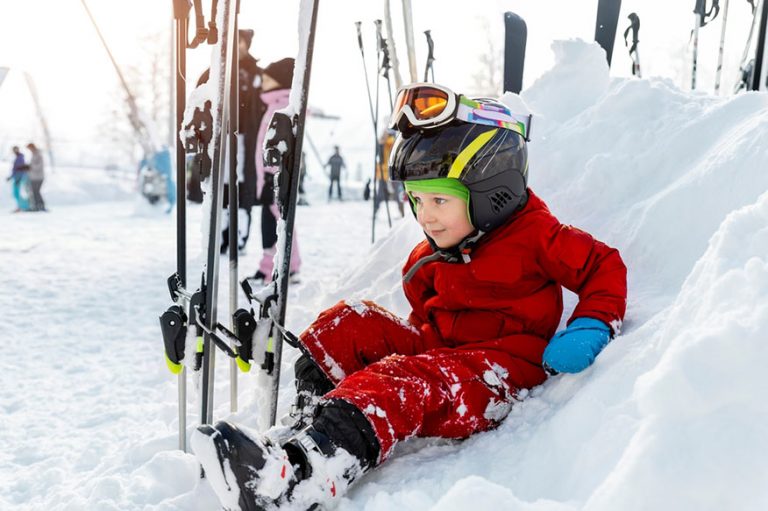
Source: Gorloff-KV/Shutterstock.com
Stay Safe and Ski Smart
Wearing a helmet isn’t just about safety — it’s about enhancing your entire skiing experience. A properly fitted helmet should stay snug without restricting your movement. Adjustable straps and padding ensure comfort, while options like full-face or half-face designs paired with goggles protect against sun glare and cold winds. Make sure your helmet doesn’t slide when you bend or lean, as a secure fit is key to its effectiveness.
Once you’ve found the right helmet, consider adding ski helmet accessories like communication devices or helmet-compatible headphones to maximize convenience and enjoyment on the slopes. While the choice to wear a helmet is ultimately yours, we recommend making it part of your essential gear. Staying protected and connected lets you focus on what really matters — having fun and making memories in the snow. Happy skiing!



